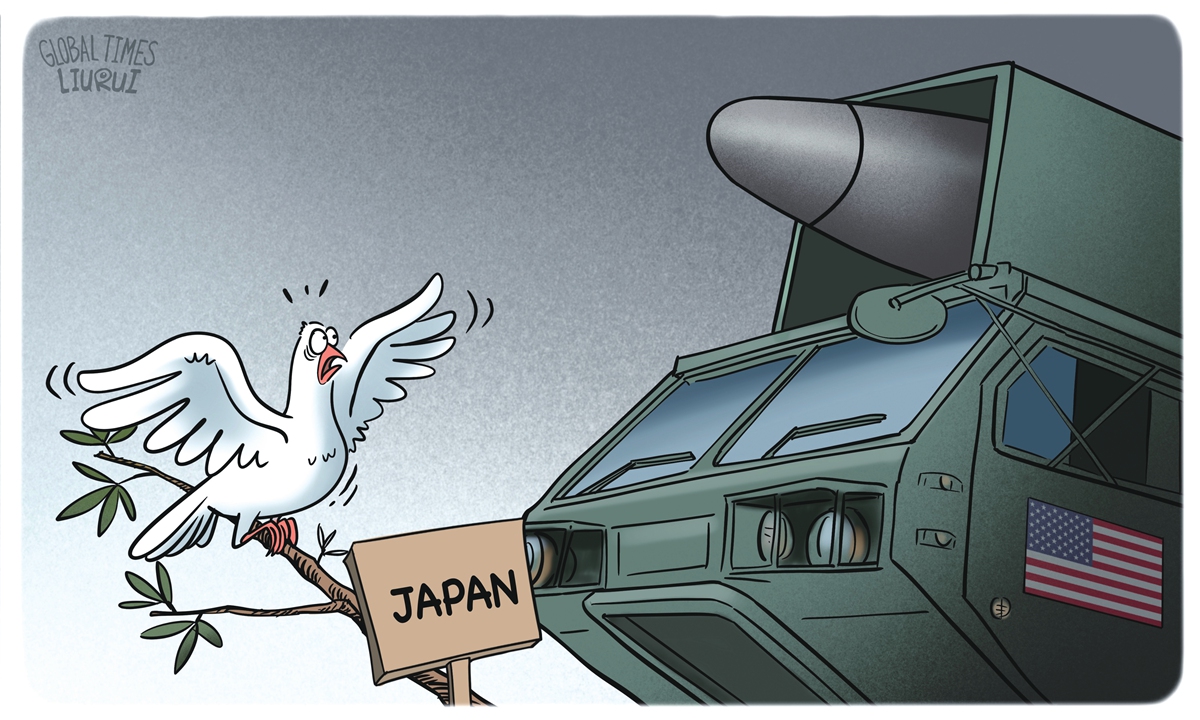
Illustration: Liu Rui/GT
According to Reuters, the US showcased its Typhon intermediate-range missile system in Japan for the first time on Monday. Following the system's deployment to the Philippines in April 2024, this marks another dangerous step by Washington in advancing its offensive military posture in the Asia-Pacific. Such actions are seriously undermining regional peace and stability.
On Tuesday, Spokesperson for the Chinese Foreign Ministry Lin Jian issued a stern warning on this matter. He said that in disregard of China's grave concern, the US and Japan went ahead with the deployment of the Typhon medium-range missile system in Japan under the pretext of joint military exercise. China strongly deplores and firmly opposes the move. China urges the US and Japan to heed the call from regional countries, correct the wrongful move and pull out the Typhon missile system as soon as possible.
From the deployment of the Typhon missile system in the Philippines, to its first public demonstration in Japan, it's clear that the US wants to establish a military deterrence framework targeting China and Russia. Despite repeated assertions by Washington that these steps aim to "maintain peace in the Indo-Pacific" and are driven by "defensive needs," the reality tells a different story. These missile systems serve not the cause of regional stability and collective security, but rather the global hegemonic strategy of the US.
Xiang Haoyu, a distinguished research fellow at the Department for Asia-Pacific Studies of the China Institute of International Studies, said that the deployment of the Typhon system in Japan would bring threefold risks. First, it could trigger a regional arms race, escalating regional security tensions. Second, it would heighten the risk of conflict escalation: The presence of the Typhon system bolsters US military intervention capabilities in the Asia-Pacific, and in the event of a conflict, the US military might be more inclined to use this system for deterrence or strikes, potentially leading to an escalation of hostilities. Finally, the risk of nuclear escalation cannot be ruled out, as the Typhon system could be used to target adversaries' nuclear weapon systems, turning a conventional conflict into a nuclear one.
Japan and the Philippines seem to be attempting to secure the so-called "protection" by strengthening military cooperation with the US. However, they are merely opening the door to US military expansion, potentially pushing themselves to the front lines of conflict. Japan and the Philippines are likely to end up as the "cannon fodder" in the US strategy, drawn into the vortex of potential conflicts in the Asia-Pacific region.
Equally concerning is Japan's role in regional security. This year marks the 80th anniversary of the victory in the World Anti-Fascist War. Given its history of militaristic aggression, Japan's military and security moves have long been closely watched by its Asian neighbors and the international community. The world expects Japan to engage in deep reflection on its past and adhere to a path of peaceful development. However, the Japanese government has actively cooperated with the US in deploying intermediate-range missiles, expanded its foreign military cooperation, raised its defense budget to a historic high, and sought to circumvent the limitations of its pacifist constitution and the postwar system. Such actions undermine regional peace and stability, provoking heightened vigilance and deep concern among neighboring countries.
History has shown that becoming a frontline base in great-power competition does not guarantee security; instead, it exposes a country to the risk of being drawn into conflicts. If a country's sense of security relies solely on the deterrence provided by weapons systems and a hegemon's "protection," it will ultimately result in isolation from neighboring countries.



